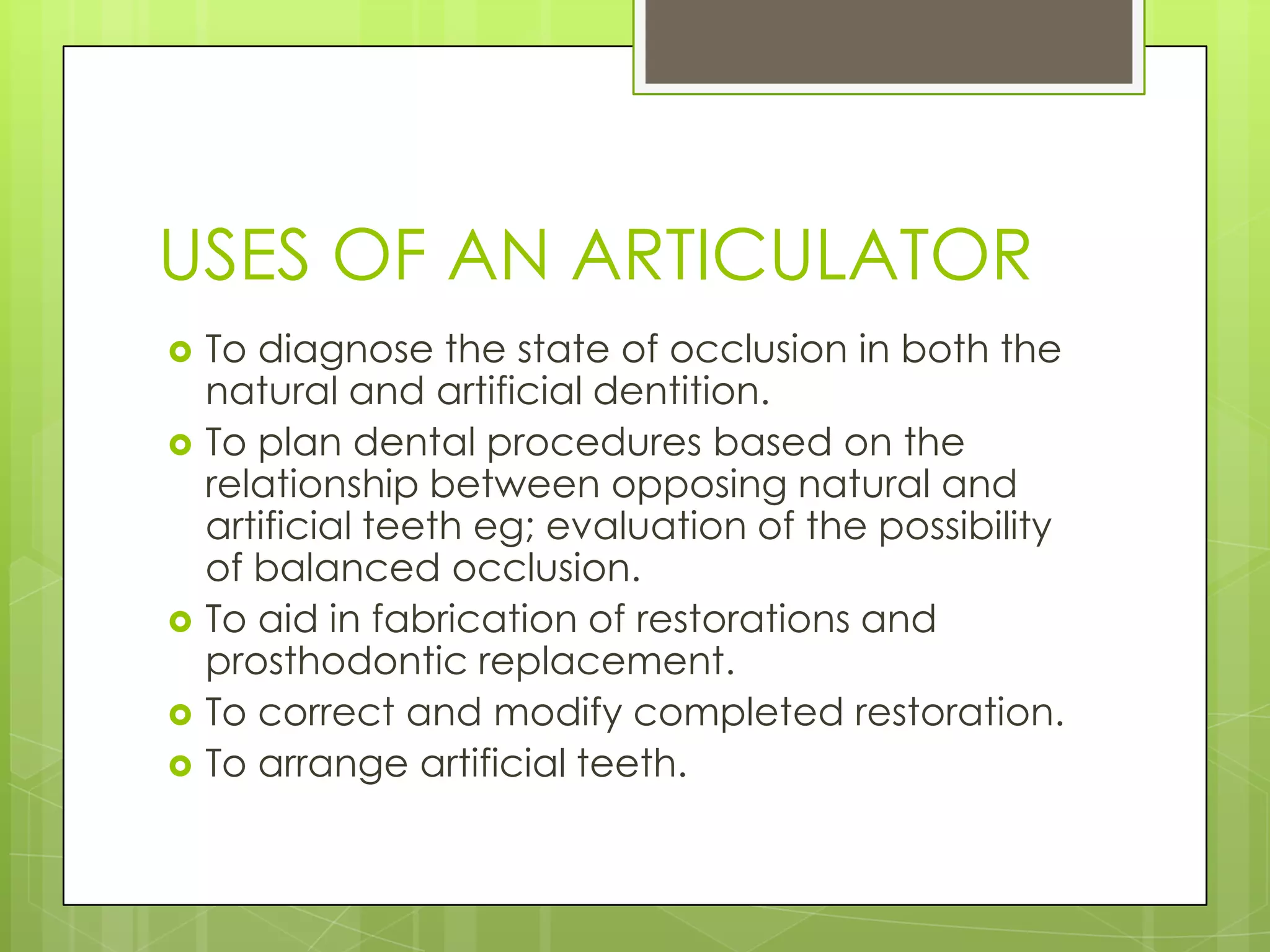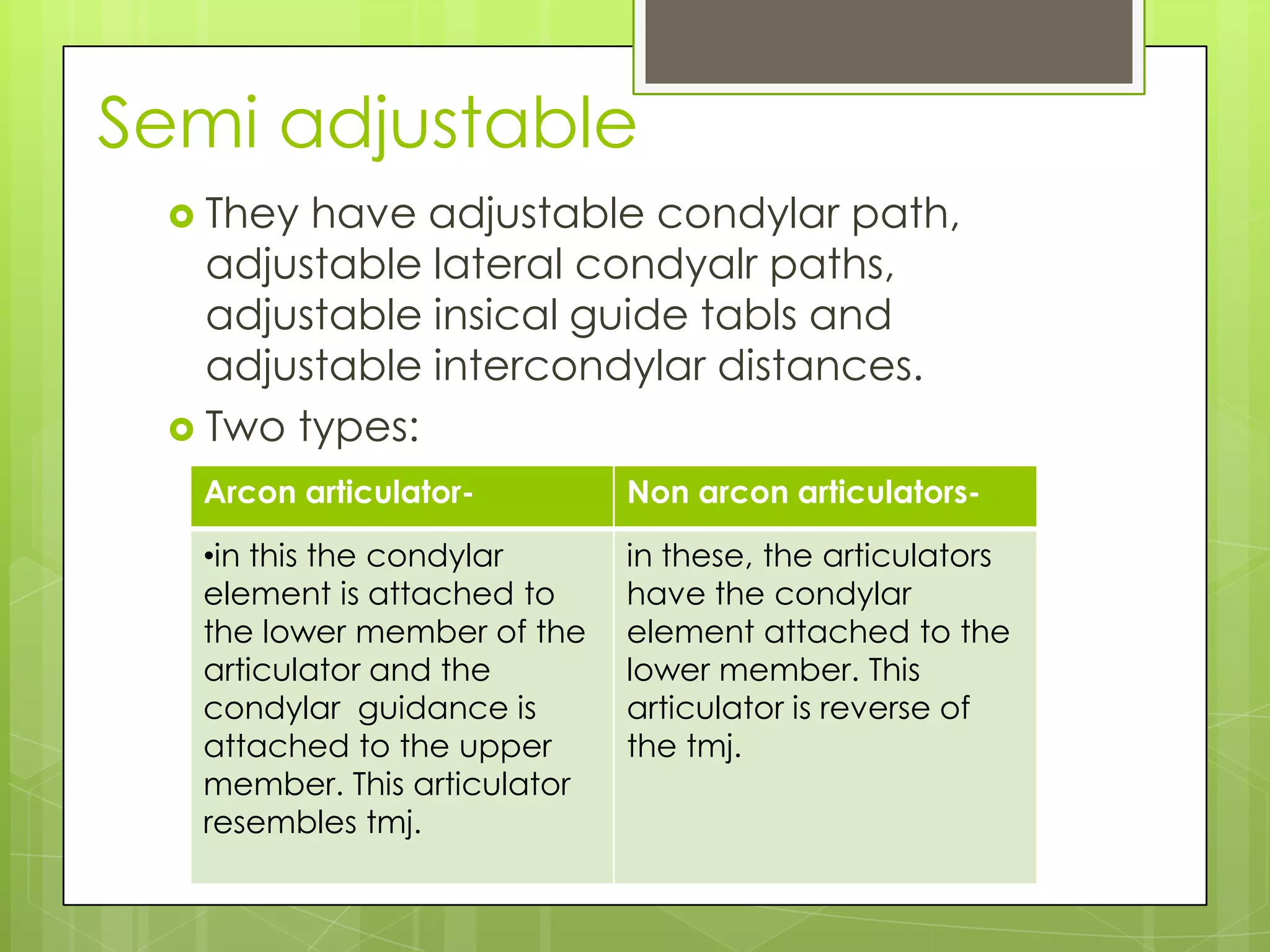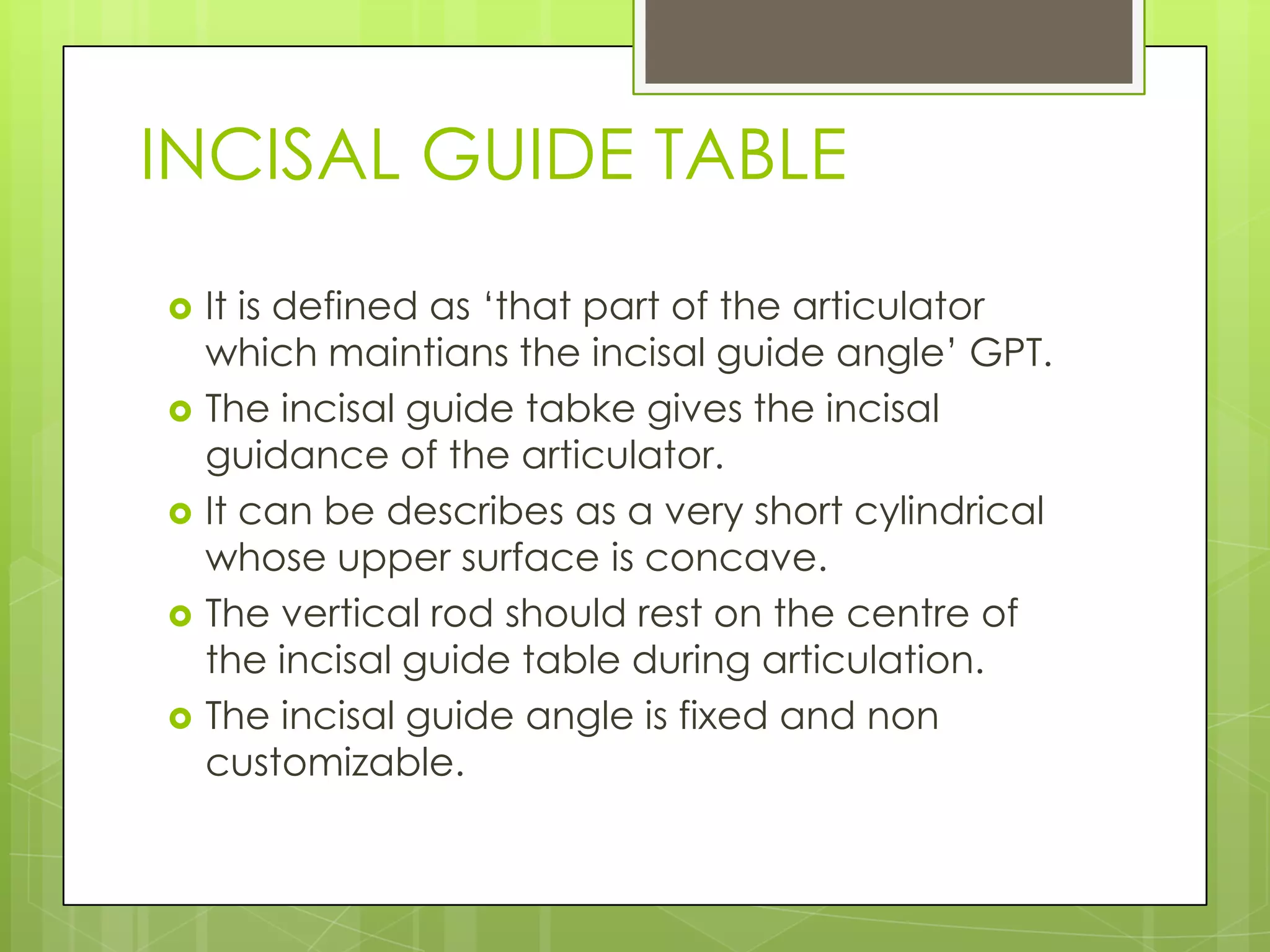The document defines an articulator as a mechanical device that represents the temporomandibular joints and jaw members to attach dental casts and simulate jaw movements. Articulators are used to hold dental casts in a fixed relationship, simulate jaw movements like opening and closing, and reproduce border and intra-border tooth movements. They allow dentists to visualize occlusion, plan treatments, fabricate restorations, and arrange artificial teeth by simulating jaw movements without needing patient cooperation. Common components of articulators include upper and lower members to hold the casts, an incisal guide table, condylar guidance, and incisal pin to maintain relationships during jaw simulation. Articulators can be classified based on the occlusion theory they follow, the




























